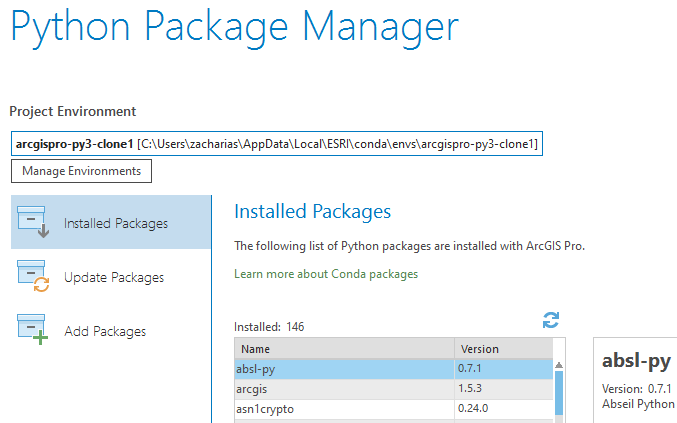

- Conda install package command prompt how to#
- Conda install package command prompt upgrade#
- Conda install package command prompt pro#
- Conda install package command prompt windows#
It was created for Python programs, but it can package and distribute.
Conda install package command prompt upgrade#
Similarly, pip may upgrade or remove a package which a conda-installed package requires. Running conda after pip has the potential to overwrite and potentially break packages installed via pip. It also easily creates, saves, loads, and switches between environments on your local computer. Most of these issues stem from that fact that conda, like other package managers, has limited abilities to control packages it did not install.

Conda quickly installs, runs, and updates packages and their dependencies.

no error pop up - Yeah!Īnd…Ta-da! It’s done! You can follow this article to test your newly installed packages :) Conda is an open-source package and environment management system that runs on Windows, macOS, and Linux. no error pop up - Yeah! You can also try with Spyder. If the installation was unsuccessful, you will get an error. If everything is okay, the command will return nothing. This may take several minutes.Ĭheck your installation by importing the packages. The pop-up window will appear, go ahead and apply. In your new ‘tensorflow_env’ environment, select ‘Not installed’, and type in ‘tensorflow’. Make sure to select Python 3.6 here! Then ‘Create’, this may take few minutes. Input a new environment name - I put ‘tensorflow_env’. Go to the Environments tab and click ‘Create’.Ģ.

I assume you have downloaded and installed Anaconda Navigator already.
Conda install package command prompt how to#
This article will walk you through the process how to install TensorFlow and Keras by using the GUI version of Anaconda. When TensorFlow is installed using conda, conda installs all the necessary and compatible dependencies for the packages as well. “ One key benefit of installing TensorFlow using conda rather than pip is a result of the conda package management system. In your conda environment, run the following command: conda env export > environment.yml This exports a list of your environments dependencies to the file environment.yml.
Conda install package command prompt windows#
why is tensorflow so hard to install - 600k+ results unable to install tensorflow on windows site: - 26k+ results Just before I gave up, I found this… Create and activate your conda environment, and install your package (s). I played around with pip install with multiple configurations for several hours, trying to figure how to properly set my python environment for TensorFlow and Keras. Photo by Krzysztof Kowalik / Unsplash Why am I writing this? To search for alternate channels that may provide the conda package you'reĪnd use the search bar at the top of the page.Say no to pip install in the command line! Here's an alternative way to install TensorFlow on your local machine in 3 steps. For Conda environments you can use the conda package manager. By default, P圜harm uses pip to manage project packages. P圜harm provides methods for installing, uninstalling, and upgrading Python packages for a particular Python interpreter. PackagesNotFoundError: The following packages are not available from current cha Install, uninstall, and upgrade packages. When I open the Package Manager now, the Project Environment window is blank and when I try to activate arcgispro-p圓 (the only environment I have re.
Conda install package command prompt pro#
I have tried conda install -c creditx sklearn_pandas, but get the following error: Solving environment: failed With a new install of Pro 2.5, I have, between trying to manage environments at the command line and through the Package Manager, kludged up my conda. The package is apparently "private" on the conda repository (admittedly this may well be why I cannot install it, but I prefer to ask for advice just in case there is a way around this). I'd like to install the sklearn_pandas library with conda via the Windows command line.


 0 kommentar(er)
0 kommentar(er)
